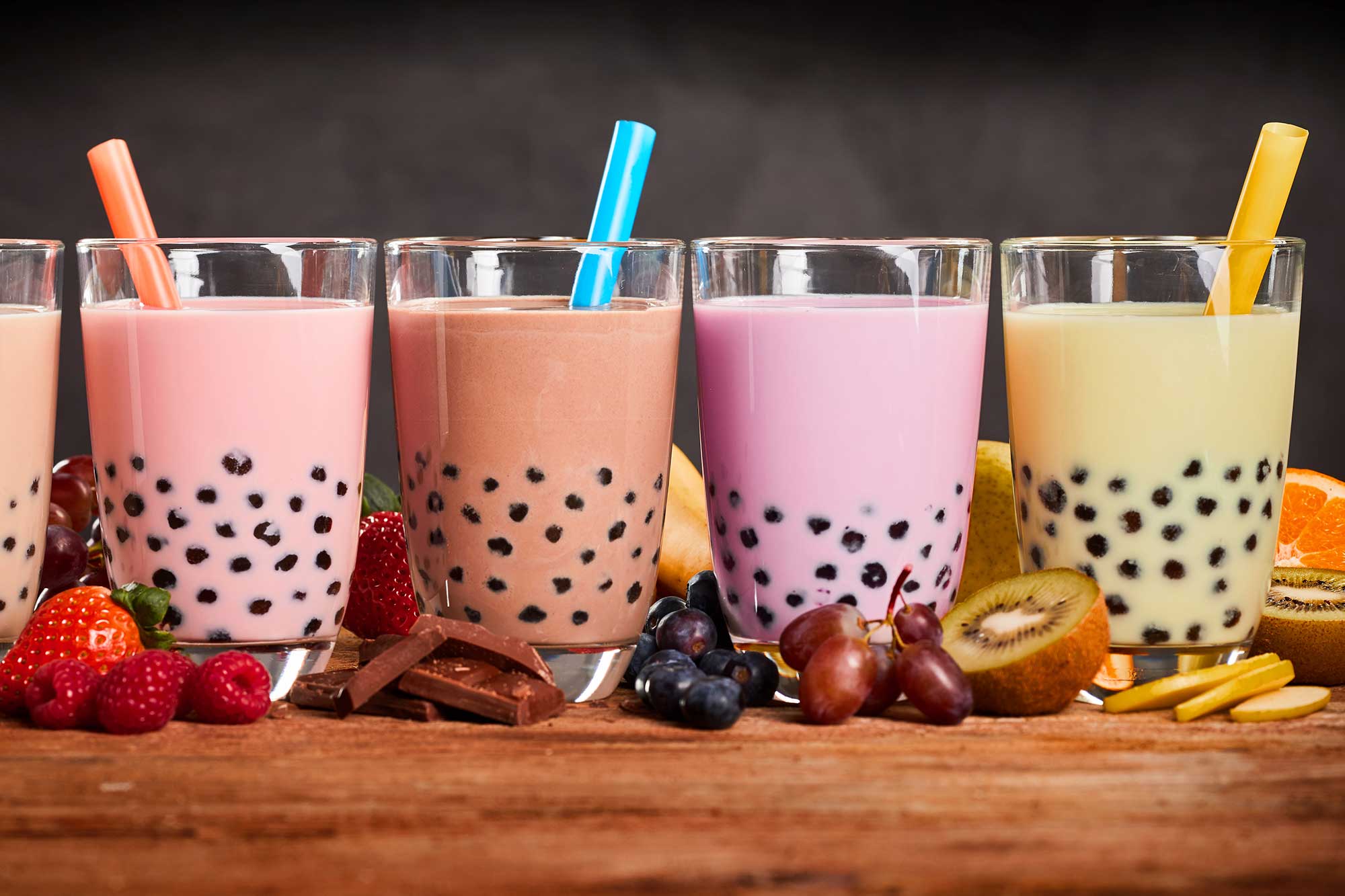

ĭue to its popularity, bubble tea has inspired a variety of bubble tea flavored snacks such as bubble tea ice cream and bubble tea candy. The cellophane is then pierced with an oversize straw, now referred to as a boba straw, which is larger than a typical drinking straw to allow the toppings to pass through. The method allows the tea to be shaken in the serving cup and makes it spill-free until a person is ready to drink it. While some cafés may serve bubble tea in a glass, most Taiwanese bubble tea shops serve the drink in a plastic cup and use a machine to seal the top of the cup with heated plastic cellophane. Today, there are some cafés that specialize in bubble tea production.

Larger pearls (Chinese: 波霸/黑珍珠 pinyin: bō bà/hēi zhēn zhū) quickly replaced these. The tapioca pearls that make bubble tea so unique were originally made from the starch of the cassava, a tropical shrub known for its starchy roots which was introduced to Taiwan from South America during Japanese colonial rule. Nowadays, bubble tea is most commonly served cold. The oldest known bubble tea drink consisted of a mixture of hot Taiwanese black tea, tapioca pearls ( Chinese: 粉圓 pinyin: fěn yuán Pe̍h-ōe-jī: hún-îⁿ), condensed milk, and syrup (Chinese: 糖漿 pinyin: táng jiāng) or honey.

Milk teas usually include powdered milk or fresh milk, but may also use condensed milk, almond milk, soy milk, or coconut milk. Both varieties come with a choice of black, green, or oolong tea as the base. A paper straw for bubble tea compared with a more typical plastic strawīubble teas fall under two categories: teas without milk and milk teas.


 0 kommentar(er)
0 kommentar(er)
